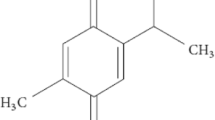Abstract
Various dermatological samples containing Liposomes as a drug carrier were prepared, and the effects of variations in the dermatological formulations, such as liposornal encapsulation, base materials, and the purity of lipid products, on drug stability and characteristics for effective topical drug delivery were investigated. Hydrocortisone-21-acetate, a hydrophobic and water-degradable, anti-inflammatory agent, was used as the model drug. It was found that the liposomally encapsulated drug was more stable than the free-form drug in an ointment formulation. Also, the hydrogel base was found to be effective in maintaining drug stability in spite of its high water content. Another evidence that Liposomes were surrounding drug particles in the base was obtained from anin vitro test of drug permeation from liposome-hydrogel through the pig ear skin. The permeability of hydrocortisone acetate through the skin membrane was found to be 2.7-fold lower in the case of liposome-hydrogel than in the case of free-drug hydrogel. The results also suggested that Liposomes play a role in localizing drug molecules in the skin membrane.
Similar content being viewed by others
References
Blume, A., Jansen, M., Ghyczy, M. and Gareiss, J., “Interaction of Phospholipid Liposomes with Lipid Model Mixtures for Stratum Corneum Lipids”,Int’l. J. Pharm.,99, 219 (1993).
Braun-Falco, O., Korting, H. C. and Maibach, H. I., eds., “Liposome Dermatics”, Springer-Verlag, Berlin (1992).
Dick, I.P. and Scott, R.C, “Pig Ear Skin as an in-vitro Model for Human Skin Permeability”J. Pharm. Pharmacol, 44, 640 (1992).
Gruner, S. M., “Materials Properties of Liposomal Bilayers, Liposomes: From Biophysics to Therapeutics”, Ostro, M. J., ed., Marcel Dekker, Inc., New York (1987).
Hansen, J. and Bundgaard, H., “Studies on the Stability of Corticosteroids. I. Kinetics of Degradation of Hydrocortisone in Aqueous Solution”,Arch. Pharm. Chem., Sci. Edn.,7, 135 (1979).
Hansen, J. and Bundgaard, H., “Studies on the Stability of Corticosteroids. III. Separation and Quantitation of Hydrocortisone and Its Degradation Products by High-Performance Liquid Chromatography”Arch. Pharm. Chem., Sci. Edn.,8, 91 (1980a).
Hansen, J. and Bundgaard, H., “Studies on the Stability of Corticosteroids. V. The Degradation Pattern of Hydrocortisone in Aqueous Solution”,Int’l. J. Pharm.,6, 307 (1980b).
Kim, J.-G. and Kim, J.-D., “Vesicle to Micelle Transitions of Egg Phosphatidylcholine Liposomes Induced by Nonionic Surfactants, Poly(oxyethylene) Cetyl Ethers”,J. Biochem. (Japan),110, 436 (1991).
Kim, J.-C, Lee, E.-O., Kim, J.-Y., Bae, S.K., Choi, T.-B. and Kim, J.-D., “Hemolytic and Antifungal Activity of Amphotericin B-entrapping Liposomes Prepared by the Precipitation Method”Pharmaceutical Development and Technology,2, 275 (1997a).
Kim, M.-K., Chung, S.-J., Lee, M.-H., Cho, A-R. and Shim, C.-K., “Targeted and Sustained Delivery of Hydrocortisone to Normal and Stratum-Corneum-Removed Skin without Enhanced Skin Absorption using a Liposome Gel”,J. Controlled Release,46, 243 (1997b).
Lee, E.-O. and Kim, J.D., “Palmitoyl Lysozyme Induced Stabilization of Phosphatidylethanolamine Liposomes and Their Interaction toCandida albicans”,J. Biochem. (Japan),117, 54 (1995).
Mezei, M. and Gulasekharam, V., “Liposomes-A Selective Drug Delivery System for the Topical Route of Administration: A Gel Dosage Form”,J. Pharm. Pharmacol,34, 473 (1982).
Wholrab, W. and Lasch, J., “Penetration Kinetics of Liposomal Hydrocortisone in Human Skin”,Dermatologica,174, 18 (1987).
Yamanaka, S.A., Charych, D.H., Loy, D.A. and Sasaki, D. Y., “Solid Phase Immobilization of Optically Responsive Liposomes in Sol-Gel Materials for Chemical and Biological Sensing”Langmuir,13, 5049 (1997).
Author information
Authors and Affiliations
Corresponding author
Rights and permissions
About this article
Cite this article
Bae, S.K., Kim, JC., Jee, U.K. et al. Protective and retentive effects of liposomes on water-degradable hydrocortisone acetate in dermatological applications. Korean J. Chem. Eng. 16, 56–63 (1999). https://doi.org/10.1007/BF02699005
Received:
Accepted:
Issue Date:
DOI: https://doi.org/10.1007/BF02699005




